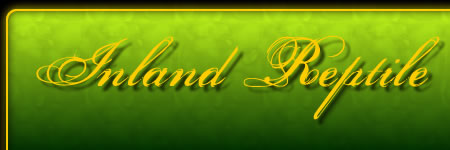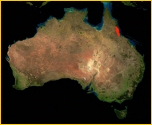

Description
 Even defining what is or is not a jungle carpet python can be difficult. This is a highly variable form and is probably only surpassed by mcdowelli in this regard.
Even defining what is or is not a jungle carpet python can be difficult. This is a highly variable form and is probably only surpassed by mcdowelli in this regard.
As a general rule this is a smaller form of carpet python, with adults typically growing to a length of 5-6ft.
Juveniles hatch in shades of black gray and silver. This sub-species undergoes one of the most dramatic ontogenetic color changes of any python. The silver and gray areas giving way to yellow and gold within the fist two years of life. While this vibrant coloration is the norm in captivity it does not accurately reflect the range of appearances present in cheynei in the wild. The general appearance of captive jungle carpets reflects more an idealized version of this taxon, born out of multi-generational selective breeding. The yellow and black form so coveted by keepers represents only a small number of the wild population. Wild specimens of Morelia s. cheynei can and  frequently exhibit many other colors not seen in the captive gene pool. Shades of brown, gray and olive frequently adorn wild specimens. There is even a stunning black and white form.
frequently exhibit many other colors not seen in the captive gene pool. Shades of brown, gray and olive frequently adorn wild specimens. There is even a stunning black and white form.
With regard to pattern, most jungles are predominantly banded animals though considerable variety exists in this area as well. Striping is common in jungles carpets and there are many examples both wild specimens and captive produced animals. Well-defined head patterns are the norm for this form and are one of the characters used to distinguish cheynei from mcdowelli.
Habitat
_thm.jpg) As its common name implies this taxon is a denizen of the closed canopy rainforest. This rainforest habitat is now fragmented throughout their general distribution. This is a very arboreal python, perfectly suited to its dense forest habitat.
As its common name implies this taxon is a denizen of the closed canopy rainforest. This rainforest habitat is now fragmented throughout their general distribution. This is a very arboreal python, perfectly suited to its dense forest habitat.
Distribution
 The exact range of Morelia s.cheynei is difficult to ascertain. The fragmented nature of its habitat and its often sympatric relationship with Morelia s. mcdowelli make defining this taxon, and its distribution difficult.
The exact range of Morelia s.cheynei is difficult to ascertain. The fragmented nature of its habitat and its often sympatric relationship with Morelia s. mcdowelli make defining this taxon, and its distribution difficult.
The southern edge of the general range of the jungle carpet lies at about 20 degrees south latitude, near Bowen. This form is strongly associated with the various river systems that drain the Atherton Tableland. Jungle carpets are also found along the watercourses lying north of the Tableland, from Julatten moving north through the Daintree region.
Carpet population located further north on the Cape York Peninsula are poorly understood. Some references designate them as mcdowelli, variagata, or cheynei. The taxonomic status of the animals in this area poorly defined at best. Animals from the Cape York region visually can display characteristics of all three sub-species and it seems likely that this area represents an intergrade zone between the three forms.
As little as one hundred years ago there still existed large amounts of rainforest habitat from Townsville, north, to the Pascoe River. With the development of modern logging equipment, 95% of this rainforest was destroyed, limiting the distribution of Morelia s. cheynei. The Resulting secondary growth and agriculture in those areas has allowed the advance of carpets pythons that are phenotypically similar to Morelia s. mcdowelli.
The relationship and areas of intergradation between these two taxons are convoluted at best and are largely the result of the last century of human habitation and utilization of the area. What the natural relationship between these forms was, prior to the destruction of much of the old growth rainforest is lost to us.
Projects
I am pleased to be working with five bloodlines of pure jungle carpets. I work with animals from three US lineages: VPI, Vandeventner and Schuette. I also continue to refine my Ivory line jungles. The roots of this project go back 16 years, each successive generation improving on the last.
I was also very fortunate to be able to obtain two new locality specific lineages of pure cheynei from Europe. The first is believed to be from the Palemerston QLD area. These jungles are more golden and subdued in color. My Palmerston locality group all exhibit some degree of dorsal striping as is typical for this locality.
The second locality group is purportedly from Tully QLD. In addition to being a locality specific bloodline these animals have phenomenal coloration.
There is only one proven mutation of the jungle carpet, the zebra jungle. This is a new mutation to the US and I was fortunate to import the first animals in mid 2008. Zebras are an intricately patterned, co-dominant mutation. Paul Harris at UK pythons recently proved the homozygous form of this mutation to be a nearly patternless carpet python. I expect great things to come form this mutation in the years to come. I am currently working with 1.1 exceptional adult zebras.
